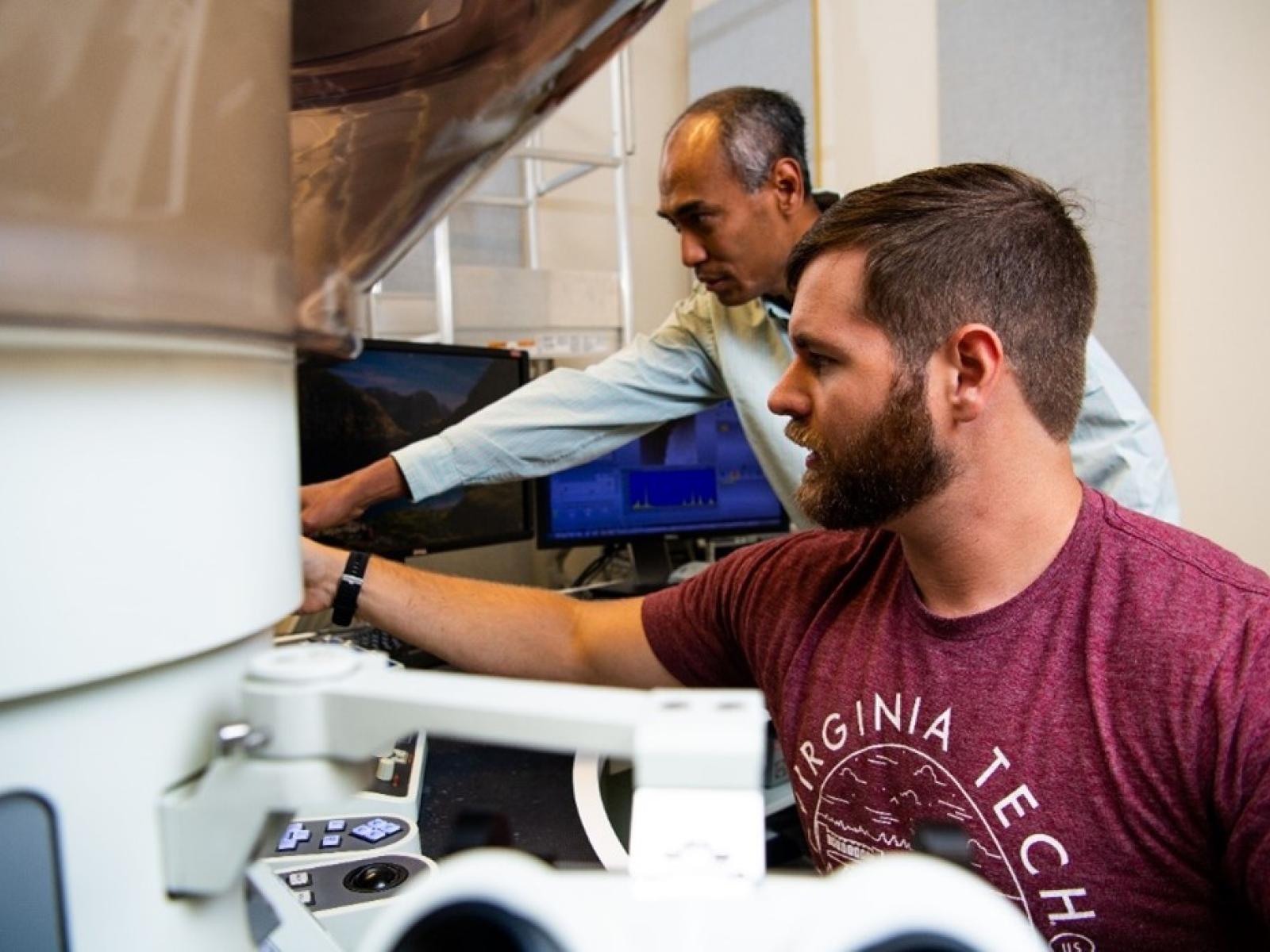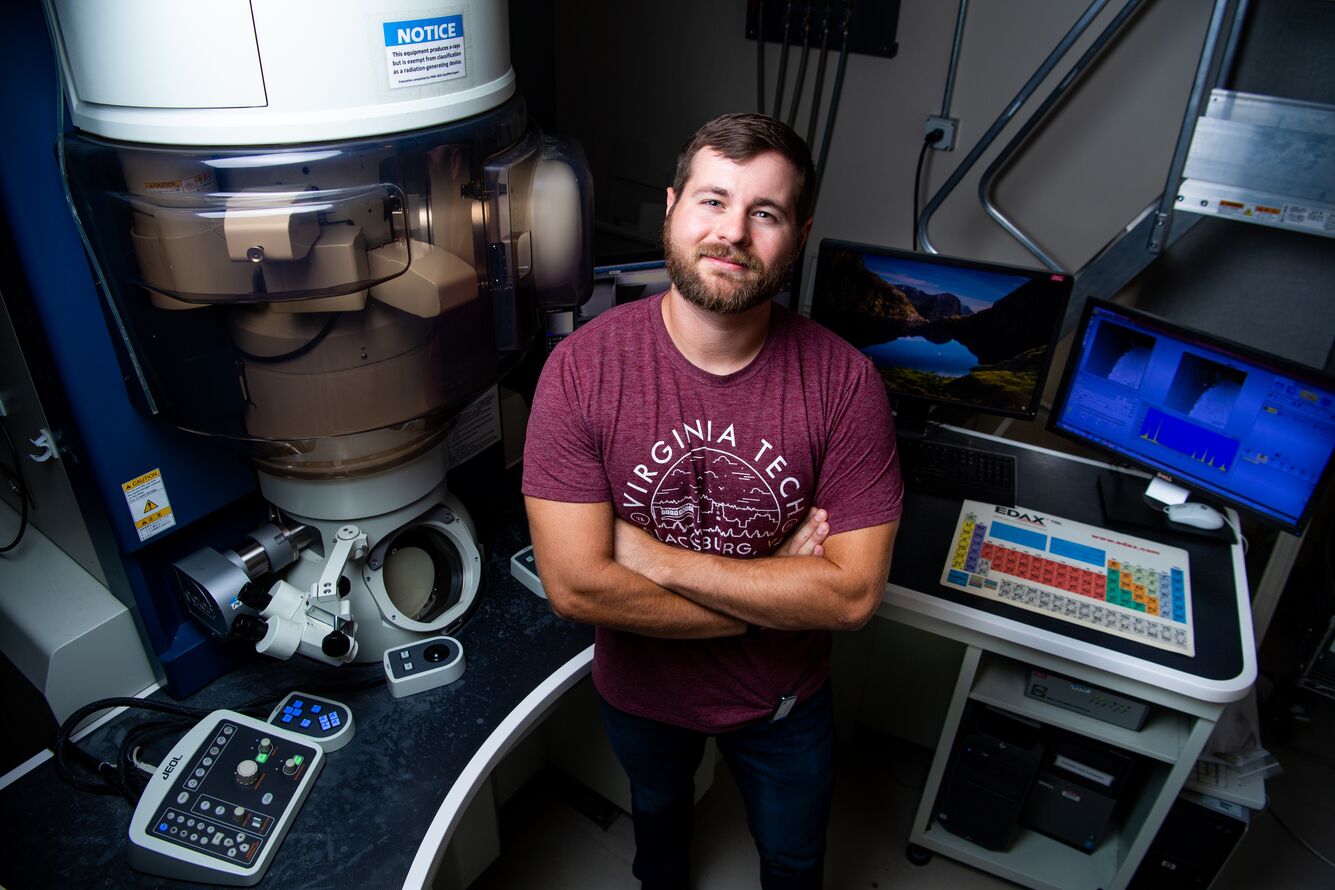PNNL Physics Research Makes Scientific Reports Top 100 Collection
Research exploring tungsten heavy alloys for use in advanced nuclear fusion reactors makes significant science impact

Researchers Jacob Haag (front) and Wahyu Setyawan (back) collaboratively explore data on irradiated materials for nuclear fusion energy using a JEOL ARM series transmission electron microscope at Pacific Northwest National Laboratory.
(Photo by Andrea Starr | Pacific Northwest National Laboratory)
Research led by Pacific Northwest National Laboratory (PNNL) was named one of the Top 100 downloaded physics papers published in Scientific Reports last year. The article, “Investigation of interfacial strength in nacre-mimicking tungsten heavy alloys for nuclear fusion applications,” was one of 910 physics papers published by the journal in 2023. It received 3,404 downloads, earning a feature as the 29th paper in Scientific Reports’ Physics Top 100 of 2023 collection, announced in March 2024.
“We are so excited to see increased interest in nuclear fusion research following recent breakthroughs in the field,” said Jacob Haag, first author of the paper. “Our hope is that research like this can help in paving the way towards tangible fusion reactors in our lifetime.”

The research makes the case for tungsten heavy alloys to be used in advanced nuclear fusion reactors, which could help make technologies for fusion energy—a carbon-neutral energy source—a possibility. The science draws inspiration from nature to help design materials capable of withstanding the extreme temperatures inside a fusion reactor. PNNL researchers and authors of the paper took a tungsten-based alloy and altered its structure to resemble nacre, the microscopic brick-and-mortar structure that helps give seashells and pearls their remarkable mechanical properties.
“If we can understand what phenomena are responsible for giving us such great mechanical properties, then we can use these findings to help develop even better and more robust materials for fusion reactors,” said Haag.
Applying nanoscale chemical analysis and atomic-level structure analysis helped the research team observe “how” and “why” these structures exhibit both high strength and high ductility at the same time.
“Composite materials, such as nacre and tungsten heavy alloys, are amazing because we can combine the beneficial properties from each constituent,” said Wahyu Setyawan, PNNL computational scientist and co-author. “The high number of citations that our paper received in a short period of time shows the immense interests and opportunities with this class of material. Knowing the recipe, we now plan to employ computer simulations to search for even better composites for fusion energy devices.”
At the time of the research, Haag was an awardee from the Department of Energy (DOE) Office of Science Graduate Student Research (SCGSR) program, completing his thesis at PNNL for his studies at Virginia Tech. The research was supported by the DOE Office of Science’s Fusion Energy Sciences and the SCGSR program.
“The SCGSR program is an amazing fellowship opportunity which helps place students at national labs to conduct a student-led research project,” Haag said. “SCGSR was a great steppingstone into a postdoc position at PNNL and helped me to grow as a researcher.”
Haag joined PNNL as a materials scientist in 2023. His expertise is in electron microscopy and his research focuses on observing how materials behave and degrade in extreme environments.
Additional authors of the Top 100 paper include Jing Wang (formerly from PNNL), PNNL’s Karen Kruska, Matthew Olszta, Charles Henager, Danny Edwards, and Virginia Tech Professor Mitsu Murayama. The work used shared facilities at the Virginia Tech National Center for Earth and Environmental Nanotechnology Infrastructure (NanoEarth), a member of the National Nanotechnology Coordinated Infrastructure, supported by the National Science Foundation.
Published: March 26, 2024